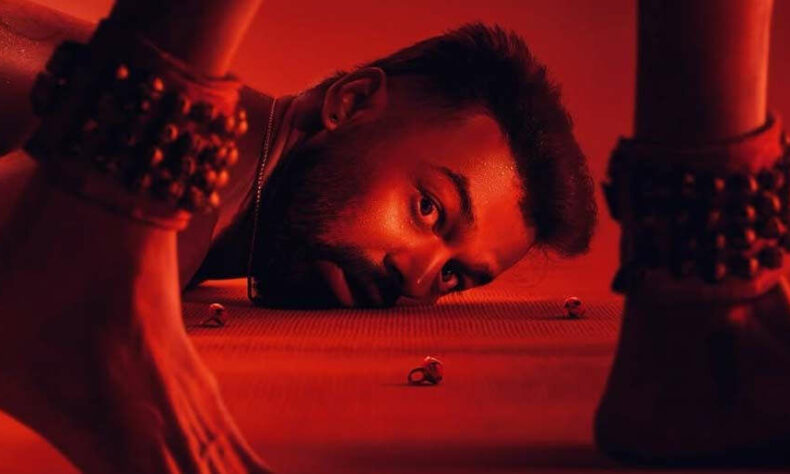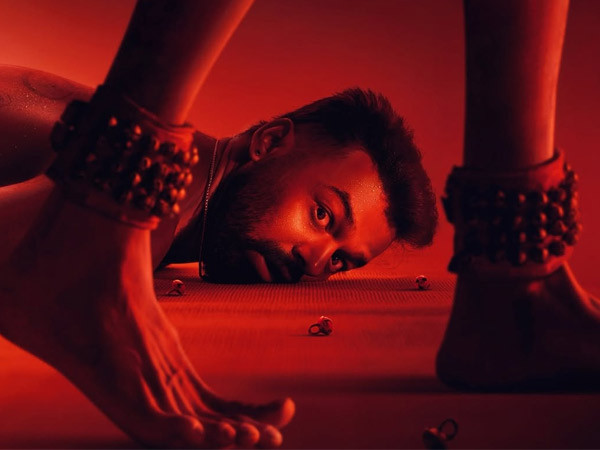

Rahul Sadasivan has a distinct way of approaching horror. He prefers stillness over spectacle and suggestion over shock. His new film Dies Irae continues that approach. It is ambitious in its design and confident in tone. Yet, it struggles to maintain narrative grip when it needs it most. The film is haunting and beautifully crafted, but it is also uneven in execution.
Pranav Mohanlal plays Rohan, an architect living in an isolated villa. His days are calm, but his nights unravel into fear and confusion. Strange noises, blurred figures, and restless dreams begin to intrude on his sense of reality. The film builds tension through silence and still imagery. As Rohan’s mind begins to fracture, the line between haunting and memory starts to fade.
Sadasivan tells the story with restraint. He avoids over-explaining, allowing the audience to sense rather than see the danger. The idea works for a while because the mystery feels rooted in emotion rather than trickery. The title, meaning “Day of Wrath” in Latin, fits the film’s focus on guilt and reckoning.
Pranav is excellent. He carries the story with minimal dialogue and steady control. His fear feels real because it is contained. He does not play to the camera or exaggerate his expressions. Every look and pause has intention. This quiet intensity gives the film its core strength.
Gibin Gopinath and Sushmitha Bhat lend solid support. They underplay their roles in keeping with the film’s rhythm. There are no forced moments or unnecessary reactions. The cast works as a cohesive unit, allowing the atmosphere to take centre stage.
Visually, Dies Irae is striking. Cinematographer Shehnad Jalal frames the villa with precision. The interiors appear spacious by design but somehow feel claustrophobic. Light and shadow are used as emotional tools. The production design adds to this sense of unease. Every object and corner appears to hold a trace of memory.
The sound design by Christo Xavier is remarkable. The film’s tension lives in its sound. Footsteps, distant breathing, and faint voices create an invisible presence around Rohan. The music never overpowers the action. It lingers quietly, building pressure without announcing itself. The technical craft here is first rate.
The film’s greatest strength is its mood. Sadasivan has complete control over tone as he did with his last offering Bhootakalam, which was a turning point for psychological horror in Malayalam cinema. Sadasivan had crafted a film that relied less on scares and more on mood, emotion, and the creeping dread of the human mind. Blending themes of grief and mental illness with an eerie sense of realism, the film showcased Sadasivan’s rare ability to find horror in heartbreak. That control continues with Dies Irae, as Sadasivan resists the temptation to fill every moment with movement. Fear comes from anticipation and silence, not from sudden loud cues. This choice gives Dies Irae a sense of realism often missing from mainstream horror.
The thematic weight also works. Beneath the fear lies a story about guilt, loss, and personal judgment. The horror is not external. It is born from what Rohan hides within himself. That emotional foundation keeps the film grounded.
Despite the strong atmosphere, Dies Irae sometimes feels sluggish. The first half takes too long to establish its rhythm. Several scenes linger without payoff. The slow pacing might appeal to some viewers, but it also risks losing tension.
The screenplay raises many questions but resolves few. Important details about Rohan’s past and the origin of the haunting remain vague. Ambiguity can be powerful, but here it borders on confusion. When the story finally reveals its secret, it lacks the emotional impact that the buildup promised.
The final act, although visually gripping, feels detached. The ending is open to interpretation but also slightly hollow. The film closes on an image rather than a feeling, and that limits its staying power.
Sadasivan proves again that he is one of the most controlled voices in Malayalam cinema today. He treats horror as mood rather than gimmick. His approach is refreshing and deliberate. Even when the story falters, the direction remains steady. Every frame feels considered. His partnership with Pranav Mohanlal shows a shared understanding of restraint and rhythm.
Dies Irae is a carefully made film that values texture and emotion over shock and spectacle. It is haunting, thoughtful, and technically accomplished. Yet it is also slow and occasionally distant. The film’s commitment to quiet tension may frustrate those looking for a faster or clearer payoff.
For viewers who enjoy atmosphere and suggestion, this film offers much to appreciate. For those who seek pace and closure, it may feel incomplete. Still, it stands as another bold step for Malayalam horror and a confident showcase for Pranav Mohanlal’s growing maturity as an actor.
Also Read: Dies Irae Trailer Promises Chilling Horror As Pranav Mohanlal Battles a Family Curse
📰 Crime Today News is proudly sponsored by DRYFRUIT & CO – A Brand by eFabby Global LLC
Design & Developed by Yes Mom Hosting






